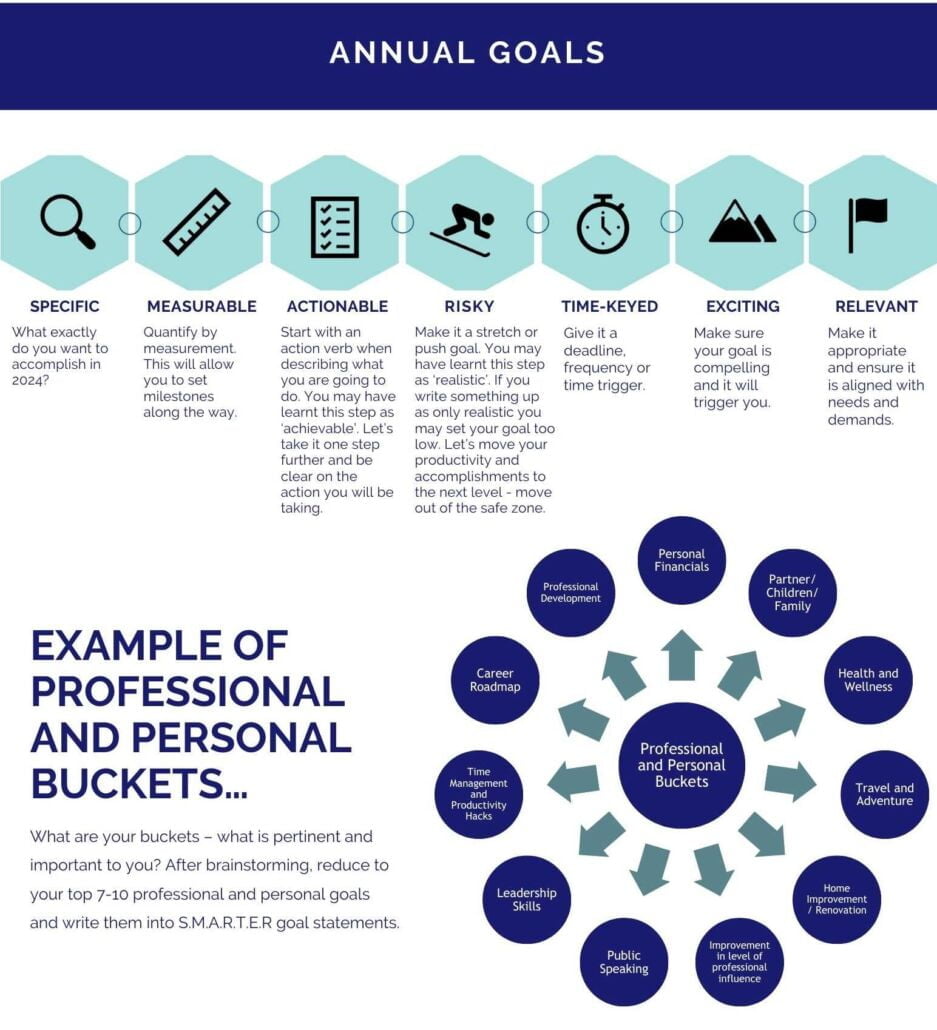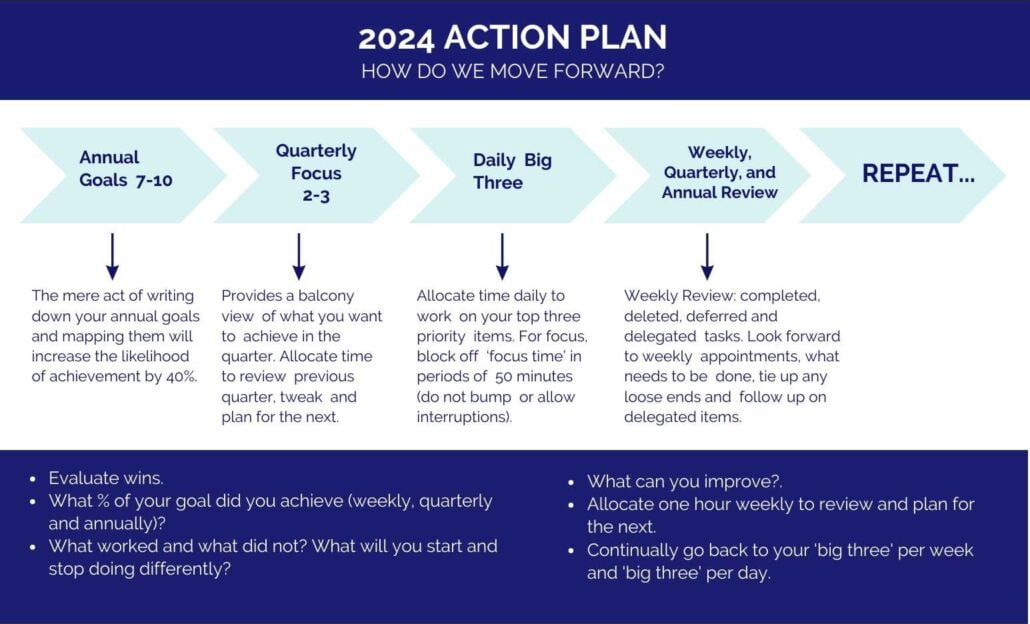Navigating the Transition: From Q1 Review to Q2 Strategy
As we close the chapter on the year’s first quarter, engaging in a reflective yet forward-thinking exercise is imperative. Reviewing Q1 not only offers insights into our achievements and areas for improvement but also sets the stage for strategic planning in Q2. This transition period is a golden opportunity to recalibrate, realign, and reinvigorate your team/s toward upcoming objectives.
Strategic Review of Q1:
1. Data-Driven Insights: Begin by comprehensively analyzing the key performance indicators and metrics set at the start of the year. Evaluate which goals were met, exceeded, or fell short, and understand the underlying factors contributing to each outcome.
2. Team Feedback Loop: Engage with your team to gather their insights and perspectives on the past quarter. This inclusive approach not only aids in pinpointing challenges and opportunities but also fosters a culture of ownership and collaboration.
3. Celebrate Successes: Recognize and celebrate the achievements and progress made, no matter how small. This boosts morale and reinforces a positive outlook towards
upcoming challenges.
Previewing and Planning for Q2:
1. Goal Adjustment: Based on the insights gained from the Q1 review, adjust your strategies and objectives for Q2 as necessary. This may involve setting new targets, scaling successful initiatives, or pivoting away from less effective strategies.
2. Resource Allocation: Assess and realign resources—be it budget, personnel, or technology—to ensure they are optimized to support the revised goals for Q2.
3. Communication and Alignment: Clearly communicate the revised goals and strategies to your team, ensuring everyone is aligned and understands their role in achieving the new objectives.
Tactical Takeaways:
• Prioritize and Focus: Identify the top priorities for Q2 and ensure that your team’s efforts are concentrated on these areas. Avoid spreading resources too thinly across multiple fronts.
• Mitigate Risks: Anticipate potential challenges or risks that could impede progress in Q2 and develop contingency plans to address these proactively.
• Continuous Learning: Foster an environment of continuous learning and adaptation, encouraging your team to apply insights from Q1 to enhance performance in Q2.
As leaders, the transition from Q1 to Q2 is an opportunity to refine our leadership approach, deepen our engagement with our teams, and steer our collective efforts toward shared success. Embrace Q2 with a strategic mindset, a clear vision, and a commitment to excellence.
The Power of Persistence: Strengthening Leadership with Tenacity
Persistence is the heartbeat of leadership—the silent yet powerful force that turns visions into reality. As a leader, your commitment to your goals is what transforms the ordinary into the extraordinary. It is the bridge between setbacks and success and a testament to the strength of your leadership.
By embracing these tactical takeaways, you will inspire your team to embody the same
relentless drive.
Tactical Takeaways:
1. Lead by Example: Your team looks to you for cues on how to navigate challenges. Exhibit persistence in your actions, and your team will mirror this perseverance in their tasks. Share personal stories of overcoming obstacles; these narratives will resonate profoundly and bolster your team’s drive to persist.
2. Cultivate a Growth Mindset: Frame challenges as opportunities for growth rather than insurmountable problems. Encourage your team to approach each setback with curiosity and learning orientation, transforming every hurdle into a stepping stone toward mastery.
3. Sustain the Momentum: Persistence is not a one-time effort; it’s a continuous endeavour. Keep the energy alive by setting a series of linked objectives that lead to the ultimate goal. This creates a ‘chain reaction’ of motivation, propelling you and your team forward.
4. Empower Through Autonomy: Trust your team with the autonomy to approach tasks in their own way. This trust conveys confidence in their abilities, empowering them to persevere through challenges with creativity and determination.
5. Create a Supportive Atmosphere: Foster an environment where team members can rely on each other. When the going gets tough, a supportive network within the team can make all the difference, providing the encouragement needed to continue pressing forward.
6. Recognize Resilient Efforts: Acknowledge not just the achievements but also the effort and resilience required to get there. This recognition validates the journey and the persistence applied, reinforcing the value of steadfastness in pursuing excellence.
Cultivating Relationships
Authentic leadership is rooted in the genuine connections and relationships you develop in your career. It’s about the trust you inspire in your direct reports and colleagues and the rapport you build with partners beyond the office walls. Such bonds are strengthened through consistent, authentic interactions—listening intently, empathizing sincerely, and engaging with a commitment that goes beyond the transactional.
The relationships you cultivate become the lifeblood of a thriving team and the hallmark of exceptional leadership. Prioritize them, invest in them, and watch as they transform your collaborative endeavours.
Tactical Takeaways:
1. Active Listening: Invest time in truly listening to your team and stakeholders, showing genuine interest in their perspectives.
2. Trust Building: Consistently demonstrate reliability and integrity to build a solid
foundation of trust.
3. Personalized Engagement: Tailor your interaction style to suit your team members and stakeholders’ needs and preferences, recognizing their unique contributions to the organization.
The Art of One-on-Ones
In the whirlwind of deadlines, back-to-back meetings, and the relentless ping of digital notifications, it can be tempting to let one-on-one meetings with your team slide down the priority list. Yet, it’s precisely these personal touchpoints that can mean the most. Giving your direct reports your full, undivided attention is more than a meeting; it’s a clear signal of their value to you and the organization. These one-on-one dialogues are critical—you’ll gain invaluable insights, steer development, and energize your team members to surpass their potential. Prioritize, protect, and use them as your strategic tool for cultivating a culture of achievement and mutual growth.
Tactical Takeaways:
1. Questions: Review of the last week: What have you been working on since we last met? What were your wins? Did you have any challenges we should discuss? If so, tell me about the situation, the action you have taken, and potential solutions you are considering.
Preview of the following week: What are your top three priorities this week? Are there any roadblocks that you are encountering that you need assistance with? Are there any other items that you would like to discuss today? Let’s review the action items we discussed and your timeline for action and then put them in priority order.
2. Structured Flexibility: Establish a regular schedule for one-on-ones while remaining flexible to the evolving needs of your team members.
3. Goal-Oriented Discussions: Focus on setting clear, achievable goals and discussing actionable steps to reach them.
4. Open and Honest Feedback: Foster an environment where constructive feedback is shared openly, paving the way for continuous improvement and personal growth.
Ready to tackle Q2 with confidence? Contact Jenny Reilly Consulting today to discover how our expertise can guide your planning process. Book your complimentary 30-minute consultation now or email us at askme@jennyreilly.com to schedule a convenient time.




